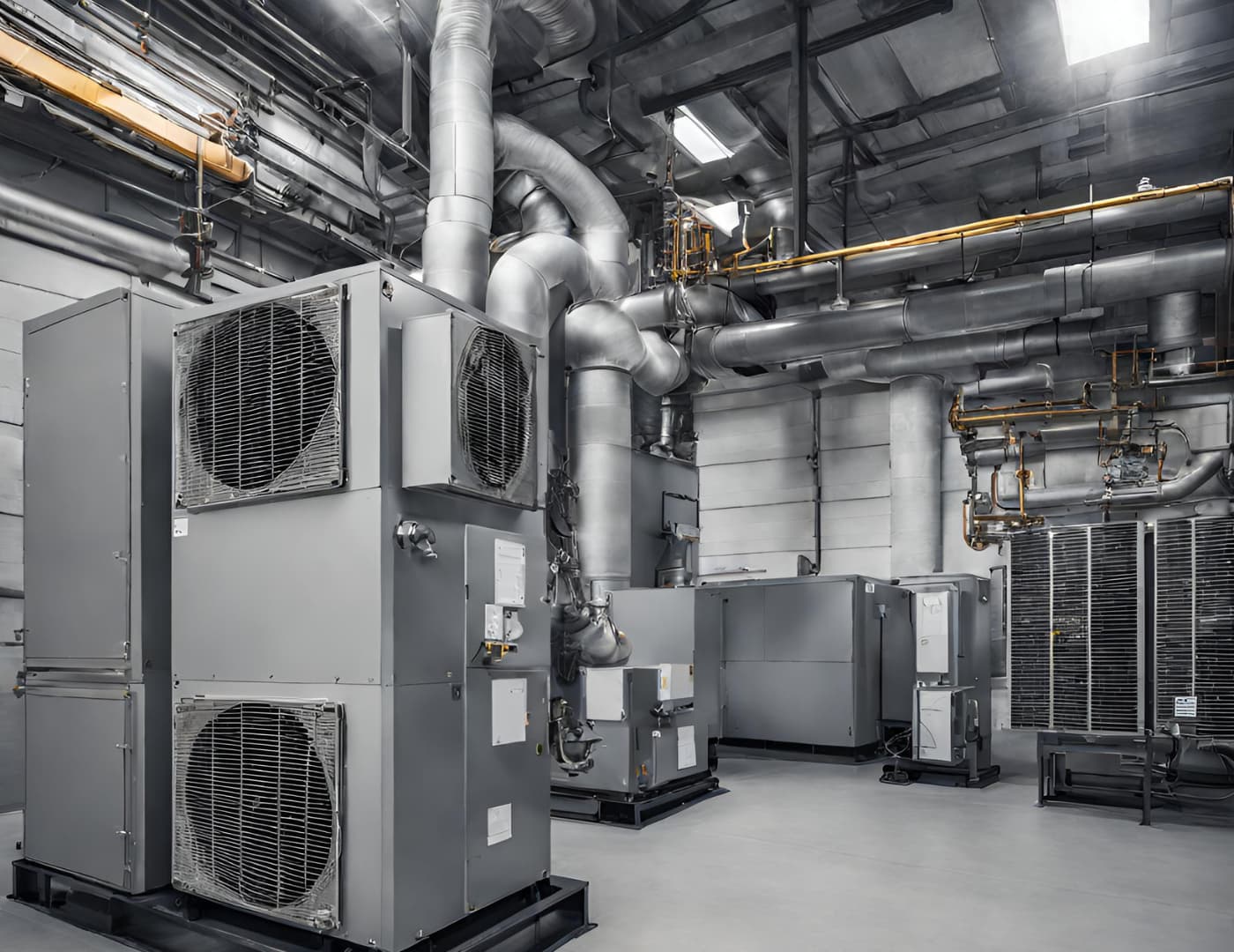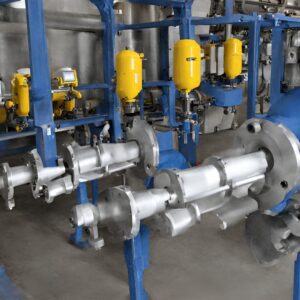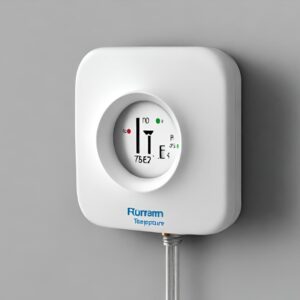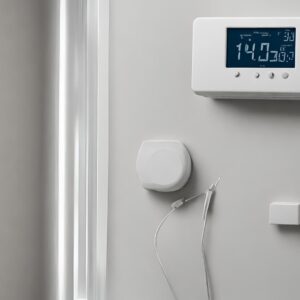When it comes to controlling airflow and temperature in various industries, damper actuators play a pivotal role. Understanding these essential components is crucial for anyone involved in HVAC systems, industrial processes, or building automation. In this comprehensive article, we’ll delve deep into the world of damper actuators, exploring their types, applications, butterfly valves, and offering valuable tips for selecting the right one for your needs.
What Are Damper Actuators?
Damper actuators are devices designed to regulate the movement of dampers, which control the flow of air, gas, or liquids in heating, ventilation, and air conditioning (HVAC) systems and other industrial applications. Essentially, they are the powerhouses behind the adjustment of damper positions. By doing so, they manage airflow and temperature, ensuring optimal conditions in various environments.
Types of Damper Actuators
To truly understand damper actuators, it’s essential to explore the various types and their unique characteristics in more detail:
- Electric Damper Actuators: Electric actuators are known for their precision and ease of control. They are highly versatile and can be integrated into complex control systems. Electric actuators utilize an electric motor to drive damper movements, allowing for precise positioning and modulating control. These actuators are often preferred when fine-tuned control is required, such as in HVAC systems.
- Pneumatic Damper Actuators: Pneumatic actuators operate using compressed air to move dampers. They are well-suited for environments where electrical power sources might not be readily available or where safety considerations favor pneumatic systems. Pneumatic actuators are known for their reliability and simplicity, making them a popular choice in industrial settings. They excel in applications requiring rapid response and fail-safe operation.
- Hydraulic Damper Actuators: Hydraulic actuators utilize hydraulic fluid (usually oil) to drive damper movements. These actuators are often found in heavy-duty applications, such as large industrial dampers and valves. Hydraulic actuators provide high force capabilities, making them suitable for handling large loads. They are known for their robustness and durability in demanding environments.
Applications of Damper Actuators
The versatility of damper actuators is evident in their wide range of applications across various industries:
- HVAC Systems: In the realm of HVAC, damper actuators are indispensable. They ensure that conditioned air is distributed efficiently and that temperature control is maintained. These actuators play a significant role in heating, cooling, and ventilation systems in commercial buildings, ensuring occupant comfort and energy efficiency.
- Industrial Processes: Damper actuators are integral to industrial processes where precise control of airflow or fluid flow is essential. They are used in applications such as combustion control, cleanroom environments, and material handling systems. In industrial ovens and furnaces, damper actuators regulate temperature and combustion processes, contributing to product quality and safety.
- Cleanrooms and Laboratories: Cleanrooms require stringent control over environmental conditions, including temperature, humidity, and particle contamination. Damper actuators are instrumental in achieving and maintaining these conditions. In laboratories, they are used to control fume hood exhaust systems, ensuring the safety of researchers.
- Energy Management: Damper actuators are vital components of energy management systems. By precisely controlling airflow and temperature, they contribute to energy savings in commercial and industrial buildings. Actuators enable the implementation of demand-controlled ventilation strategies, reducing energy consumption while maintaining indoor air quality.
Selecting the Right Damper Actuator
Choosing the right damper actuator is paramount for ensuring optimal system performance. Here are more in-depth tips to guide you in the selection process:
- Torque and Force Requirements: Understand the specific torque or force requirements of your damper. Different applications demand varying levels of force. Electric actuators offer precise control, making them suitable for applications where fine-tuning is essential.
- Size and Mounting: Consider the size and mounting options of the damper actuator. Ensure that it fits the damper size and configuration you intend to control. Proper sizing prevents issues related to overloading or underperforming actuators.
- Environmental Conditions: Evaluate the environmental conditions in which the damper actuator will operate. Some environments may expose actuators to extreme temperatures, moisture, or corrosive elements. Choose an actuator with appropriate sealing and materials to withstand these conditions.
- Control Options: Determine the level of control required. Some damper actuators offer advanced control features, such as modulating control, which allows for precise adjustment of damper positions. Consider whether your application necessitates these features.
- Compatibility: Ensure that the damper actuator you select is compatible with your existing systems, including the control system and communication protocols. Compatibility issues can lead to inefficiencies and operational challenges.
- Reliability and Durability: Look for damper actuators from reputable manufacturers known for their reliability and durability. Investing in high-quality actuators can result in fewer maintenance issues and longer service life, ultimately saving time and money.
Damper Actuators
In the world of damper actuators, Belimo stands as a recognized leader known for its exceptional quality and performance. Belimo damper actuators offer a diverse range of options to suit various applications. Whether you require precise control in HVAC systems, robust performance in industrial settings, or energy-efficient solutions, Belimo has a solution to meet your needs.
Butterfly Valves and Damper Actuators
The synergy between damper actuators and butterfly valves is a crucial aspect of fluid control systems. Butterfly valves are commonly used to regulate the flow of fluids in pipelines. Damper actuators play a pivotal role in controlling the position of these valves, allowing for precise control of fluid flow rates.
Benefits of Damper Actuators
Understanding the benefits of damper actuators further emphasizes their significance:
- Improved Energy Efficiency: Damper actuators enable precise control, allowing for optimal energy usage in HVAC systems and industrial processes. By modulating airflow or fluid flow rates, they help reduce energy consumption and associated costs.
- Enhanced Control: Damper actuators provide the ability to fine-tune damper or valve positions. This results in precise control over airflow, temperature, or fluid flow rates, ensuring that environmental conditions are maintained within desired parameters.
- Reduced Maintenance: High-quality damper actuators are reliable and require minimal maintenance. Reduced maintenance needs translate to less downtime and lower operational costs, contributing to long-term cost savings.
- Cost Savings: Through energy efficiency and reduced maintenance requirements, damper actuators can lead to significant cost savings over time. The initial investment in quality actuators pays off in improved efficiency and reduced operational expenses.
Conclusion
In conclusion, damper actuators are integral components in a wide range of applications, from HVAC systems in commercial buildings to industrial processes in manufacturing facilities. Their ability to regulate airflow, temperature, and fluid flow with precision makes them indispensable for maintaining optimal conditions and achieving energy efficiency. When selecting a damper actuator, considering factors such as torque requirements, size, environmental conditions, and control options is essential. Whether you’re a professional in the field or someone seeking to optimize their systems, the knowledge of damper actuators is key to achieving success in various industries.




